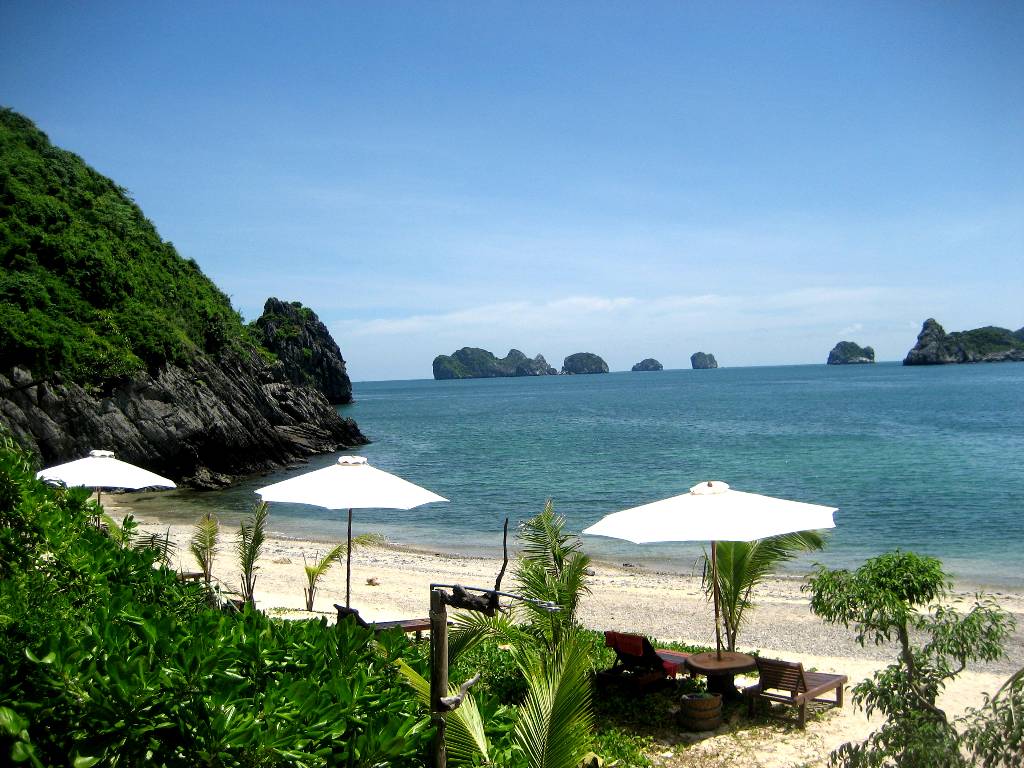Most people come to Cat Ba Island as part of a two-day cruise on Halong Bay. They generally view the island as little more than a rest stop before the long drive back to Hanoi.
But there’s far more to Cát Bà than the port town. Staying at the Cát Bà Eco-Lodge, 13 kilometres inland, my friends and I got to explore an impressive landscape where there are seemingly more rice paddies than tourists.
We arrived at the lodge in the late afternoon, as the wind swept through the mountains and the sky was stained the deep gray of approaching night. It was too late to go on an ambitious hike, so we opted for the “Waterfall Hike,” which was described as a picturesque 30-minute walk to see a nearby waterfall.
The man behind the front desk looked enthusiastic about our choice. Then he brought us to the rock wall.
We contemplated the wall for a minute before our guide, clearly impatient with our postponement, began to scramble up.
“Come on!” he called, already perched on a high ledge.
It was obvious that no one had gone on the “Waterfall Hike” for quite some time. The rocks were overgrown with leaves and tangled branches. My hair caught in a thorn, and I crouched awkwardly on a ledge to untangle it.
“How much farther?” one of my friends asked.
“Maybe twenty minutes,” our guide said. He was climbing down now, as rapidly as he had come up. “See you later!”
We continued climbing up the jagged wall for a few minutes before we admitted defeat. There was no waterfall in sight, only rocks and more rocks and leaf cover that got thicker the higher we climbed.
We exchanged glances. Then one of us said what we were all thinking: “Maybe an easier walk would be better.”
After picking our way down the rock wall, we headed along a narrow path into the hills. With the shadows of mountains on both sides, we were surrounded by mist. The cool breeze blew all around us. Darkness was falling, but we managed to snap a few pictures before night arrived.
Then it was time to head back to the lodge, where we ordered a barbecue dinner. It was a bit of a splurge at $15, but well worth it for the hearty plates of ribs, chicken drumsticks and charred squid.
Most of the food served at the lodge travels less than two miles to get there – one of the main reasons that we chose this hotel. Not only is the eco-lodge situated in an ideal spot for trekking through this remote area; it also emphasizes sustainability. This means that trash is recycled and composted, the buildings are built with natural materials and local people help run the business.
Sustainable hotels like the Eco-Lodge can play an important role in the country’s tourism development. But sadly, too many tourists are unaware that these hotels exist – or don’t realize why they are important. Journeying back to Hanoi, we stopped in the island’s port town to get on the bus, where we encountered flocks of tourists who had never left the main street.
“There really isn’t much to Cát Bà,” one of them said. Little did they know.
| 













